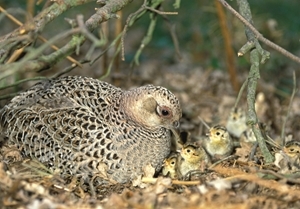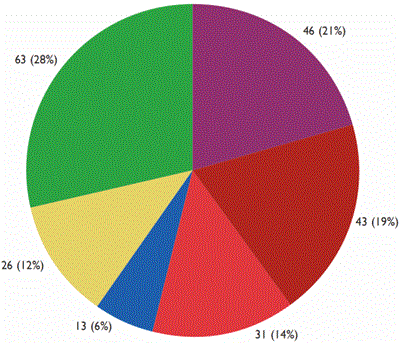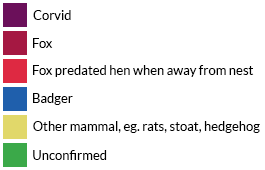 Pheasants, like all gamebirds, are vulnerable to predation during nesting. Reducing levels of nest predation is fundamental to maintaining or increasing stocks of wild-bred pheasants. Predators and their impacts on birds have always been controversial subjects. Recently, some conservation organisations have begun to tackle the issue of high nest predation rates in ground-nesting birds; something that game managers have been doing for many years.
Pheasants, like all gamebirds, are vulnerable to predation during nesting. Reducing levels of nest predation is fundamental to maintaining or increasing stocks of wild-bred pheasants. Predators and their impacts on birds have always been controversial subjects. Recently, some conservation organisations have begun to tackle the issue of high nest predation rates in ground-nesting birds; something that game managers have been doing for many years.
However, nest predation rates, identifying predators and the factors that influence predation are difficult to study in the field as kills are rarely witnessed. We have often used radio-telemetry as a research tool in projects investigating particular aspects of the biology or ecology of pheasants and always record detailed data on nests of radio-tagged pheasants. To gain a better insight into the factors influencing nest predation in pheasants, we reviewed data from approximately 900 radio-tagged hens collected over a 15-year period on six different shooting estates in southern England, eastern England and Austria.
During our field studies, we checked nests three times a week to ensure that nest outcome data were as precise as possible and, when a nest was predated, the remains of birds and nests were examined carefully to identify the predator. Common predators including foxes, badgers and corvids could often be identified from characteristic field signs. For example foxes often chew transmitters and bury carcasses whereas badgers trample vegetation around nests, and corvids leave characteristic peck marks in eggs.
We were able to analyse in detail data from 450 nests. We found that 34% of pheasant clutches hatched successfully, 43% of nests were lost because of predators, a further 10% were abandoned completely and 5% were destroyed by farming operations. The remaining nests failed owing to other causes including flooding. 43% of nests were in woodland, 30% in arable fields, 13% in field margins, 7% in set-aside, 6% in grassland and 1% in other habitat types.
Figure 1: Causes of predation of nests of radio-tagged pheasants


Of the nests that were predated, foxes and corvids (mainly carrion crows) were the most important nest predators. Foxes accounted for 33% and corvids 20% of predated nests (see Figure 1). The estimates of fox and corvid predation are conservative as the nest predator could not be confirmed in a third of cases where the entire nest contents had been removed; something that foxes and corvids are known to do.
We conducted an analysis to determine the influence of a range of factors on nest predation rates. These included habitat, the age of the hen, laying date, the level of predation control on the estate and the density of hen pheasants. Habitat type, laying date, hen age and hen density did not influence nest predation. However, nests on estates with intensive predation control in the nesting season were a third less likely to be predated than nests on sites with low-intensity predation control (see Table 1).
Many gamekeepers are busy on the rearing field in the spring and summer, so predation control at this time can be a secondary duty. This research shows that a targeted and efficient predation control programme can significantly improve the nesting success of wild pheasants. It is likely that other birds may benefit from this predation control too. Several recent studies of declining farmland birds, including lapwing, yellowhammer, skylark and corn bunting, found that predation was the most important cause of nest failure.
Table 1: Average nest predation rates of radio-tagged pheasants during incubation on six study sites in southern England, eastern England and Austria
| Factor |
Level |
No. of nests |
Overall nest
predation rate (%) |
| Habitat type |
Woodland |
159 |
51 |
| |
Arable crop |
119 |
45 |
| |
Field margin |
44 |
48 |
| |
Grassland |
23 |
40 |
| |
Set-aside |
22 |
52 |
| Predation control |
High |
122 |
37 |
| |
Low |
255 |
58 |
| Age |
First year |
293 |
47 |
| |
Two+ years |
51 |
47 |
| Date |
April |
87 |
56 |
| |
May |
167 |
43 |
| |
June |
85 |
53 |
| |
July-August |
38 |
38 |
Get the Latest News & Advice
Join over 100,000 subscribers and stay updated on our latest advice, research, news and offers.
*You may change your mind any time. For more information, see our Privacy Policy.